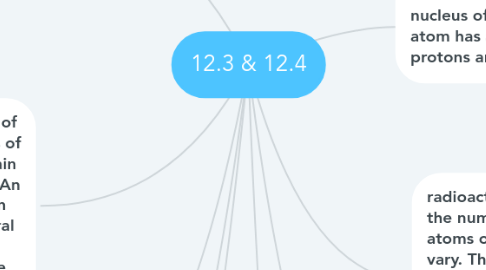12.3 & 12.4
by Haiden j

1. Half Life- A half life is a common way of expressing the rate of radioactive decay. Half life is the amount of time necessary for one half of the nuclei in a sample to decay to its stable isotope.
2. Radiometric Dating: Is a way of calculating the absolute ages of rocks and minerals that contain certain radioactive isotopes. An accurate radiometric date can be obtained only if the mineral remained in a closed system during the entire period since its formation.
3. Eons- Earths history is divided into to 4 long units called Eons. 88% of today's time and past have made up almost 3 of our 4 Eons.
4. Structure of the time scale: Eons represent the longest intervals of geologic time Eons are divided into eras. Each era is subdivided into periods. Finally periods are divided into still smaller units called epochs
5. Periods and Epochs: Each era is divided into periods. The earth reacts different to each period.
6. Radioactivity: is a process the nucleus of the of the atom. Each atom has a nucleus made up of protons and neutrons
7. radioactive isotopes: Recall that the number of neutrons in the atoms of a given element can vary. These diffrent forms of a element are called isotopes. Unstable or radioactive isotopes of an element is called the parent. The decay from the parents are called the daughter.
8. Dating with carbon -14: When a organsims dies the amount of carbon -14 gradually decreases as it decays. By comparing the ratio of carbon -14 to carbon -12 in a sample, radio carbon dates can be determined.
9. Eras- A way we classify time periods. The prehistoric era mostly happened during the Phanerozoic eon.


